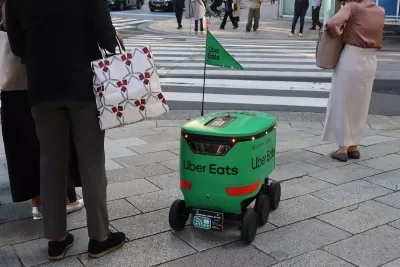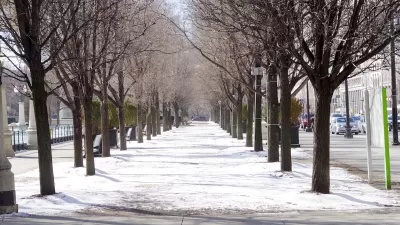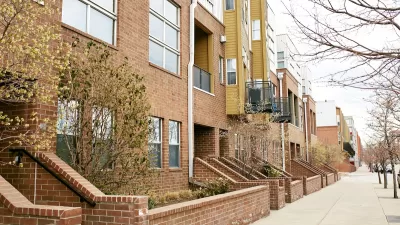Ride-hailing and scooter companies blindsided cities. They shouldn’t let delivery robots do the same.

Writing in Policy Options, Gavin MacGregor and Mischa Young argue that cities should develop strategies for mitigating the negative impacts of delivery robots and “ensure this intrusive technology does not disadvantage city sidewalk users.”
As MacGregor and Young note, delivery robots, which have been deployed in cities around the world, can “impede pedestrian flow, cause discomfort and amplify navigation challenges in crowded pedestrian environments.” Larger and heavier robots could mean a higher risk of injuries if they collide with pedestrians. “Broader adoption of delivery robots could turn less frequent incidents into a wider problem for pedestrians, cyclists and wheelchair users.”
The authors point out that the proliferation of delivery robots could disproportionately impact people with mobility challenges and the elderly. “Too often, the deployment of new urban technologies focuses on those who stand to benefit while overlooking those who could be excluded or burdened by them.”
The authors write that cities could avoid getting blindsided in the same way they did when ride-hailing companies like Uber were suddenly introduced on city streets to ensure the technology is deployed safely and equitably, not at the expense of vulnerable populations and public space. “A proactive and pre-emptive policy framework is essential to mitigate potential challenges associated with the widespread deployment of these delivery technologies.”
FULL STORY: Cities need to get ahead of autonomous delivery robots

Study: Maui’s Plan to Convert Vacation Rentals to Long-Term Housing Could Cause Nearly $1 Billion Economic Loss
The plan would reduce visitor accommodation by 25,% resulting in 1,900 jobs lost.

North Texas Transit Leaders Tout Benefits of TOD for Growing Region
At a summit focused on transit-oriented development, policymakers discussed how North Texas’ expanded light rail system can serve as a tool for economic growth.

Why Should We Subsidize Public Transportation?
Many public transit agencies face financial stress due to rising costs, declining fare revenue, and declining subsidies. Transit advocates must provide a strong business case for increasing public transit funding.

How to Make US Trains Faster
Changes to boarding platforms and a switch to electric trains could improve U.S. passenger rail service without the added cost of high-speed rail.

Columbia’s Revitalized ‘Loop’ Is a Hub for Local Entrepreneurs
A focus on small businesses is helping a commercial corridor in Columbia, Missouri thrive.

Invasive Insect Threatens Minnesota’s Ash Forests
The Emerald Ash Borer is a rapidly spreading invasive pest threatening Minnesota’s ash trees, and homeowners are encouraged to plant diverse replacement species, avoid moving ash firewood, and monitor for signs of infestation.
Urban Design for Planners 1: Software Tools
This six-course series explores essential urban design concepts using open source software and equips planners with the tools they need to participate fully in the urban design process.
Planning for Universal Design
Learn the tools for implementing Universal Design in planning regulations.
City of Santa Clarita
Ascent Environmental
Institute for Housing and Urban Development Studies (IHS)
City of Grandview
Harvard GSD Executive Education
Toledo-Lucas County Plan Commissions
Salt Lake City
NYU Wagner Graduate School of Public Service





























